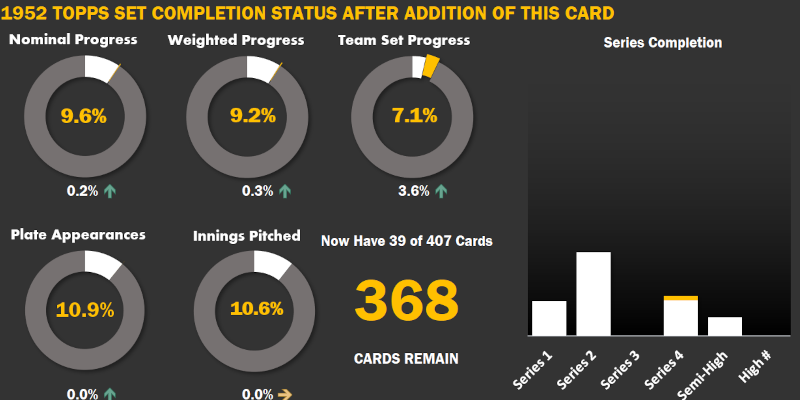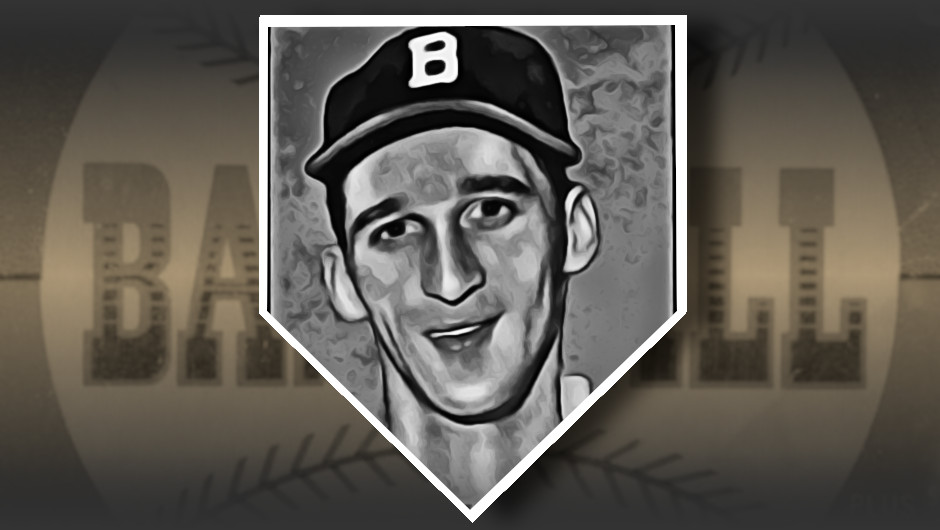Based in New York, Topps stacked its (then) monster 1952 set with Dodgers, Giants, and Yankees players. Even with all three teams considered near the top of their respective histories it is seen as a bit of overkill. Perhaps this is illustrated best by the fact that four Yankees catchers appear in the set. Hall of Famer Yogi Berra is an obvious choice for inclusion. His hard-hitting Hall of Fame predecessor Bill Dickey appears in the high number series as a coach. Second string backstop Charlie Silvera is included as well. The fourth catcher is the backup’s backup, Ralph Houk.
Houk would play in only 91 career games with nearly half coming in his 1947 rookie season. Most of his time was spent warming up pitchers in the bullpen. He never hit a major league home run (i.e. he trails Bartolo Colon on the all-time HR list) and never stole a base.

“The Major“
Houk enlisted as a private in the US Army at the outset of 1942. He was assigned to officer candidate school at Fort Knox and trained for several years, ultimately being commissioned a second lieutenant in 1944. He was soon sent to Europe where he and his 89th Calvary Reconnaissance Squadron followed their 9th Armored Division allies into the Normandy beaches that had been opened just three months earlier. In December the German counteroffensive known as the Battle of the Bulge swept into his position in the Ardennes. Heavy fighting killed his two commanding officers, making Houk the de facto leader of the unit. He took charge, secured mechanized artillery for the battle, and successfully repelled the attack despite being wounded in the leg by shrapnel. Houk earned a Silver Star, the nation’s third highest combat award for valor, as well as a Purple Heart.
Further into the campaign Houk was sent behind enemy lines for reconnaissance work. His return was cut off and he remained behind German forces for three days before returning to his unit. His unit was ordered to into an offensive at Remagen, where a sniper sent a bullet between Houk’s skull and helmet. They pushed forward with Houk taking a key bridge and capturing the sniper along with eight other prisoners.
Additional honors followed, including a battlefield promotion to first lieutenant, a bronze star, and an end-of-service promotion to major. He may have been the toughest guy to ever appear on a pink baseball card.

Houk took his last at-bat in 1954 and moved into a coaching position with the Yankees. His military service and officer training served him well, making him a popular figure among those under his care. He was selected to replace Casey Stengel when the famed manager left the Yankees and promptly led the team to two consecutive World Series championships in 1961 and 1962. He would go on to lead additional teams until well into the mid-1980s.
Another Houk Card: ’85 Topps
As a kid I knew the name Ralph Houk. Not because of baseball history, an intimate following of the game, or even through vintage cardboard, but rather because I had only one 1985 Topps baseball card for several years. For some unknown reason I had card #11 from the set. It showed an absolutely aged Houk as manager of the Boston Red Sox. He was only 65 or 66 years old but he looked ancient to a kid 7 times younger than he was.

Houk is shown at dusk standing at the edge of a Spring Training field. The back of the card actually shows that he retired in 1984, meaning Topps printed a card of an ex-manager in a move harkening back to the Tommy Holmes card issued in 1952. Topps still thought it necessary to tell fans reading the back of this card that Houk had batted and thrown right-handed. His original 1952 rookie card barely needed this information given how little he actually played. Comparing the personal information shown on both cards, it appears Houk was born a year earlier than previously supposed, moved to Pompano Beach, and shed one pound of weight.









